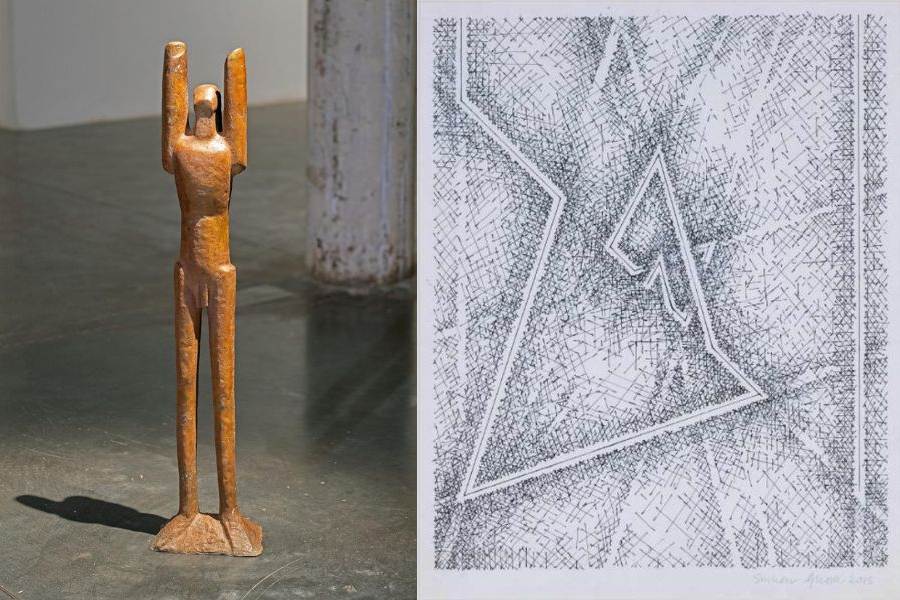Sushen Ghosh’s sculptures and some of his drawings have the rhythm and lyricism of unfolding forms, much like the unfurling of hand-held fans and the unravelling of a raga. These works bring to mind Marcel Duchamp’s Nude Descending a Staircase whose aim, the Modern master had said, was “a static representation of movement.” Ghosh’s untitled 1994 lithograph of a running human being also refers to the Duchamp painting.
Ghosh, who was born in 1940 in Silchar, Assam, died in April this year. He was a rare, albeit unsung, artist who emerged from Santiniketan at a time when his mentors were masters like Ramkinkar Baij and Benode Behari Mukherjee. So Galerie 88’s exhibition, Lyric, Still: Sculptures by Sushen Ghosh (October 7-November 30), was a well-deserved and timely tribute. After completing his studies, Ghosh joined the department of sculpture at his alma mater as a teacher. In 1969, long before it became famous as the incubator of talents like Damien Hirst, Ghosh studied art at Goldsmiths, London, on a British Council scholarship. Trained to play the flute early in his life, he had already been introduced to the measures of Indian classical music. In London, his direct encounter with the original works of Modernist masters like Henri Matisse, Paul Klee, Paul Cézanne, Constantin Brâncusi, Amedeo Modigliani and the Bauhaus artists quickened his imagination. It was here that the abstract principles of mathematics and geometry first began to mould his sculptures.
His austere, pen-and-ink drawings of the sculptures of dancers and musicians at Konark and the terracotta friezes of Bishnupur, dating back to 1975, capture the kinetic energy of the figures shorn of all frills and ornamentation. In the 1960s, he was obviously under the spell of Ramkinkar Baij and the small, but powerful, bronze sculpture of the man with raised arms (picture, left), his disproportionately large barrel chest swelling up as if with some upsurge of emotion, is typical of that period. Like his mentors, Ghosh was deeply influenced by the natural beauty of Santiniketan’s environment and the date palm with its ‘vertical, cylindrical and columnar trunk of the same girth all the way up’ is a recurrent motif in his drawings and sculptures. Shorn of the frond, the solitary trunk manifested as a monumental outdoor sculpture in Santiniketan. Ghosh’s interest in abstraction was quite evident from the tubular forms in bronzes and terracottas of the 1980s.
The cadence of his work becomes markedly different in the new millennium. His severe, yet elegant, pen-and-ink drawings inspired by geometric forms have the shape-shifting, playful quality of kaleidoscopes (picture, right). The complex, often labyrinthine, forms of Hindustani classical compositions are at the back of his mind while sketching these. They may have been executed on small sheets of paper but, their slight measurements notwithstanding, they often give the impression of monumentality. Even his small sculptures have the aloofness and the dignity of monoliths.
The simplest of forms reflecting the shapes and the structures of everyday objects, such as earthenware pots for storing jaggery, slats of windows and the lotus bloom, are deconstructed and arranged on the floor in an ascending and descending order as if they were complex musical compositions. This is what Ghosh described as “evolution and reverse evolution”. As Sushen Ghosh had said in an interview: “It is as if a pebble has been cast in a still pool and ripples have started to form”.











